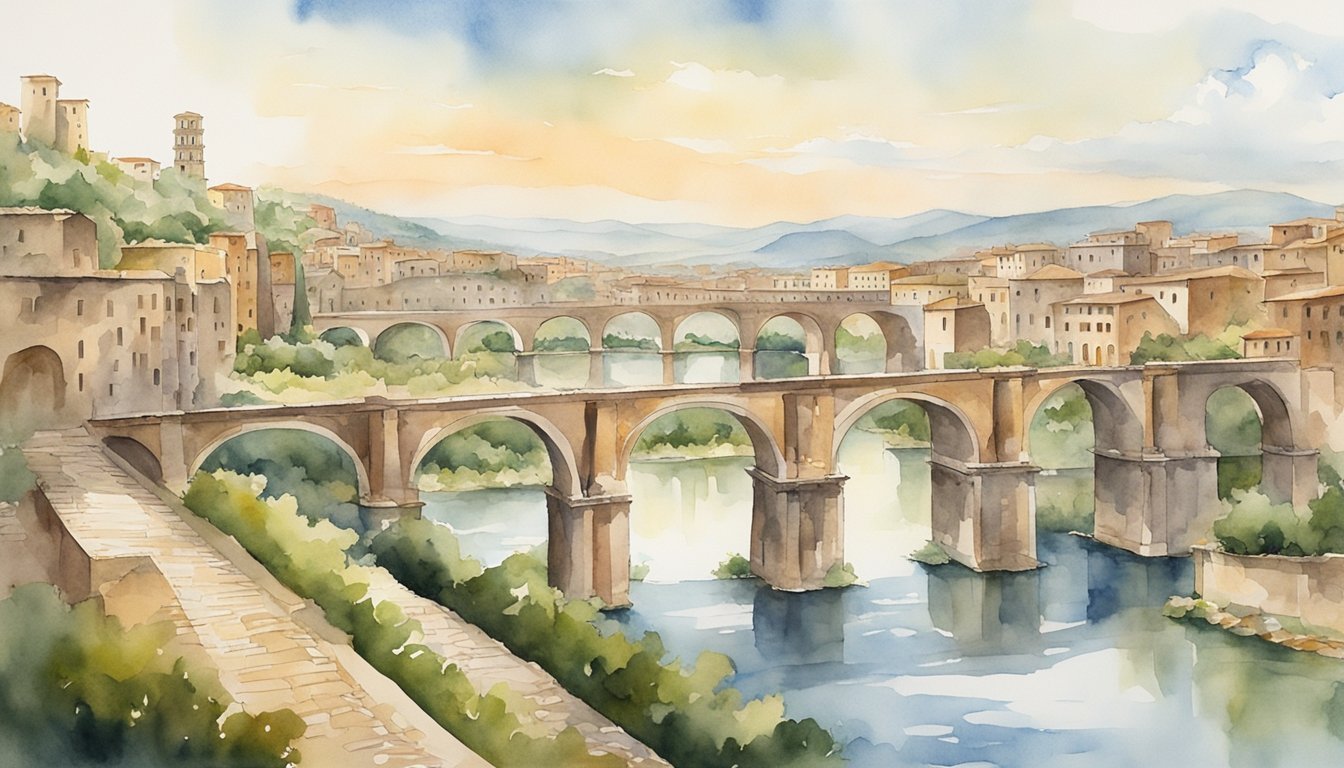The Engineering Marvel of Roman Aqueducts
Water Management in the Roman Empire
Roman aqueducts were an impressive engineering feat that played a crucial role in the daily life and growth of the Roman Empire. These marvelous structures were built to transport water from distant sources to cities and towns, providing people with a reliable supply of fresh water for drinking, bathing, and other domestic uses.
One of the most famous aqueducts in Rome is the Aqua Marcia, which was completed in 144 BCE and stretched over 91 kilometers. It was renowned for providing the highest-quality drinking water to the city of Rome.
Construction Techniques and Materials
The construction of Roman aqueducts involved a sophisticated understanding of engineering principles, such as the use of gravity to transport water over long distances and the employment of arches for structural support. Roman engineers designed aqueducts with a precise gradient (slope) that allowed water to flow smoothly and consistently without stagnating.
A variety of materials were used in the construction of aqueducts. The main structural component was stone, often sourced locally. For the arches and support structures, concrete was a popular choice due to its strength and versatility. This type of concrete was a mix of volcanic ash, lime, and water, resulting in a strong and durable material that could withstand the weight of the aqueducts.
Roman engineers also used advanced construction techniques that allowed them to build long and winding aqueducts across various terrains. This not only showcased their immense knowledge of the natural world, but also demonstrated the adaptability and ingenuity of their engineering.
Notable Features of Roman Aqueducts
-
Tunnels and Channels: Some sections of the aqueducts were built underground as tunnels or channels, which reduced the amount of construction materials needed and provided better protection from the elements. These tunnels were often carved out of rock, and lined with concrete to ensure a smoother water flow.
-
Arches and Bridges: When aqueducts had to cross valleys or other obstacles, they were often built above ground, supported by a series of arches and bridges. The use of multiple layers of arches allowed the aqueduct to maintain a constant gradient and remain stable.
-
Wells and Distribution Basins: In the cities, the water from the aqueducts would be distributed to public fountains, baths, and other locations through a network of wells and basins. This system allowed for an efficient and organized distribution of water throughout the city.
Roman aqueducts remain a testament to the engineering prowess and organizational capabilities of the Roman civilization, highlighting the importance of teamwork, infrastructure, and skilled builders in the advancement of any society.
Impact and Legacy of Aqueducts on Society

Urban Development and Daily Life
Roman aqueducts had a significant influence on urban development and daily life in ancient cities. Myriad towns and cities greatly benefitted from the introduction of a steady water supply,, which allowed their citizens to enjoy public baths, fountains, and access to clean drinking water. For instance, the Roman aqueduct at Pont du Gard supplied water to the town of Nimes, traveling about 12 miles from its source before reaching its destination and providing enough water to serve the entire community.
Public fountains and cisterns were widespread, ensuring that even the lower classes had access to fresh water. These aqueducts also enabled the efficient planning and distribution of water in the expanding Roman Empire. Irrigation allowed for a thriving agricultural economy, enabling the cultivation of diverse crops and contributing to the prosperity and sustainability of the society.
Advancements and Influence on Future Generations
Roman aqueducts were remarkable feats of engineering that left a lasting impact on future societies. By mastering bridge-like structures and tunnels to transport water across valleys and inclines, Roman engineers developed techniques that have carried on throughout history, influencing later civilizations and governments in their approach to water management.
Roman emperors took the construction of aqueducts seriously, knowing that a reliable water supply was essential for a city’s growth and prosperity. Emperor Augustus, for example, oversaw the expansion of Rome’s water infrastructure, ensuring that the capital of Italy had the necessary resources to support its burgeoning population.
In addition to their superior engineering skills, the Romans demonstrated foresight in water governance with laws regulating water usage and management. This early regulation of water helped to pave the way for modern municipal water systems, highlighting the significance of the Roman water management legacy.
Despite the use of lead pipes for water distribution, which could have potentially caused health problems, Roman aqueducts remain a strong testament to their ingenuity, aptitude for planning, and commitment to their citizens. Cities such as Constantinople, Pompeii, and Nova adopted aspects of the Roman aqueduct system, ensuring the continued influence and legacy of this remarkable architectural innovation.

